Queensland’s population surges due to the great post-pandemic migration boom
More young families are moving to Queensland than ever before - who can blame them? But the southern influx is making life tougher for locals. HAVE YOUR SAY
QWeekend
Don't miss out on the headlines from QWeekend. Followed categories will be added to My News.
Every time Sophie Andrews and Alan Jones packed up from a Queensland beach holiday to board a plane back south, the same question played on their minds: “We love it so much, why are we leaving?”
The answers were always the same. Work, family, too hard.
But then came Covid, and something started to shift. By late 2020, they had a toddler, Eleanor, now five, and a newborn, Owen, now one, in a rented apartment in Kensington, in Sydney’s inner east. Jones’s engineering job fell victim to the pandemic so he was contracting. But not overly happy.
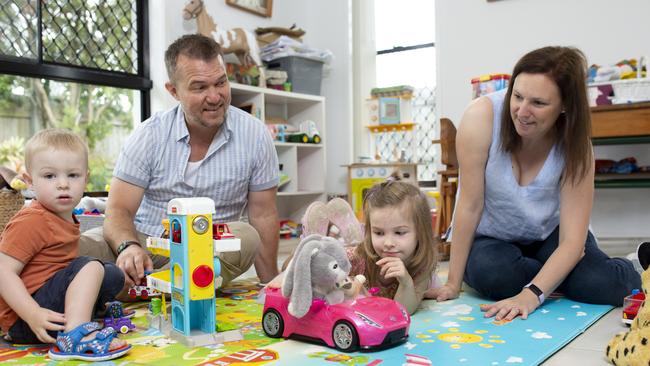
Life got harder when Sydney went into a 15-week lockdown in 2021. Two kids cooped up in an apartment. Barred from visiting family in the western suburbs. Paying $750 a week rent. Still, Andrews, a neuropsychology researcher, had a job she enjoyed based at the University of New South Wales, so they adapted.
They moved to Parramatta late last year, closer to family, to a house with a garden. Andrews’ commute was stressful – a three-hour round trip with tolls of $30 a day – but maybe they’d be able to afford to buy out there. They watched, ruefully, as house prices kept rising.
Come New Year, Andrews, 40, flew to the Sunshine Coast to visit a girlfriend who’d moved from Sydney 18 months earlier. She was filled with stories of her new home. The sun. The friendliness. The cheaper housing. The ease of living.
“We went to the beach,” says Andrews. “And it was just stunning. And I said, ‘I want to live here.’ And she said, ‘Why don’t you?’”
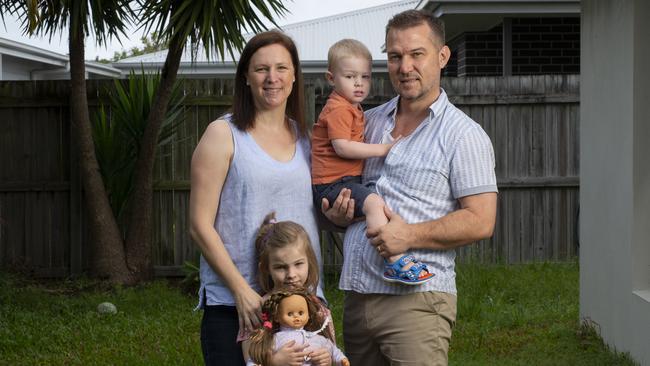
This time, the question stuck. Jones, 42, was keen; he’d relish a career change. “We started to really think about what’s important to us,” he says. “Do we want to be chasing our tails all the time or do we want to spend more time with the kids?”
Andrews knew about the Thompson Institute at the University of the Sunshine Coast, a four-year-old facility specialising in mental health research. She decided to send an email about a job. Perhaps something will come up in a year or so.
A few days later, a reply arrived. The institute had a position that might suit. Could she do a Zoom meeting?
Now, here they are: renting a new, four-bedroom home in Caloundra, with Andrews at the institute, Jones taking a pay cut but revelling in a shift into financial technology sales with American Express and the kids happy in daycare. “Everyone has been really friendly and welcoming,” says Andrews.
“I know Queenslanders are a little hesitant about people moving up here. But individually, people have been lovely.”
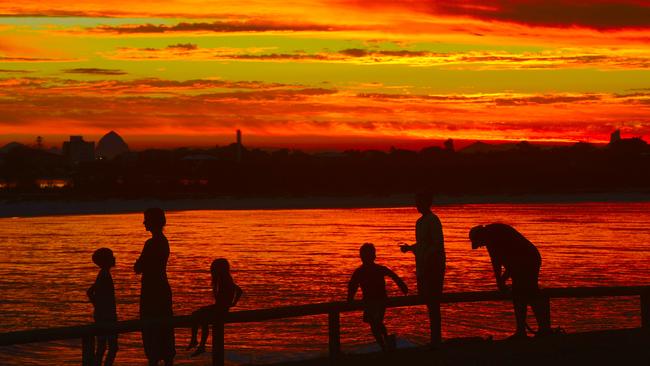
She’s right, the murmurings of discontent are out there. Look at these southerners, moving into our scarce rentals, pushing up our house prices, clogging our roads. In pubs and at barbecues, it’s a hot topic: Can Queensland maintain its enviable lifestyle with such a hefty influx of “Mexicans”, some all cashed-up after selling their overpriced homes in overhyped southern capitals?
Truth is, Queensland has absorbed the hordes before. In the early 1990s, the state experienced a flood of interstate migrants, breaking previous records in 1993 when 53,000 Australians moved to the Sunshine State. They’re now our accountants, our volunteers, our doctors, our cafe owners.
We’ve just pipped that record, and Covid has been a driving force. Australian Bureau of Statistics figures show that to the years ending March 2019 and 2020, net interstate migration was steady around 23,000 to 24,000. By March 2021, it had bounced to 31,000.
By this March, 54,000 people had packed up, waved goodbye and teemed across the Queensland border.
Dig into the figures, as Knight Frank Research has, and they’re not the stereotypical retiree looking for a beach to relax on. Just 18 per cent are 60-plus. The bulk are aged between 30 and 59, with 17 per cent under 10. Young families are voting with their feet; sinking their toes into our sands, soaking up the sunshine, making a life. Can we blame them?
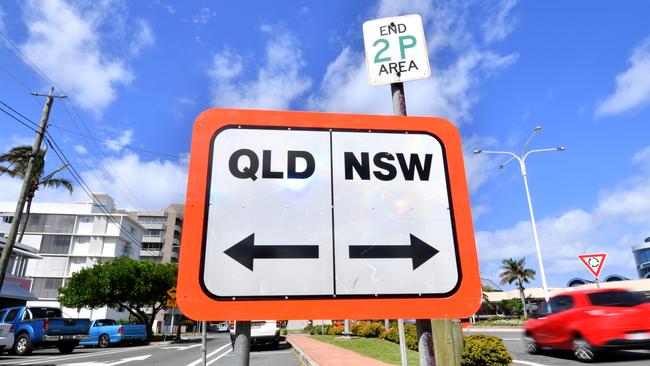
THE PLACE TO BE
As they planned their April move this year, Andrews and Jones made a list of the Sunshine Coast suburbs they’d like to live in.
Very quickly, they binned the list. They’d take what they could get.
Jones spent 10 days on the Sunshine Coast, looked at about 20 homes for rent, applied for eight and got none. Having rented in Sydney and Melbourne with little trouble, it was confronting. At inspection after inspection, Jones encountered the same people, many of them locals who’d been priced out of rentals. He could “see the strain on their faces”.
“We feel really sorry for people trying to come into this market now, or people who were already here,” Jones says. After eight more applications and six weeks of searching, aided by friends, the family secured a home for $625 a week.
Those who can’t find a place, or afford one, are dossing at friends’ houses or pitching tents. It’s a harsh and inequitable trend throughout Queensland – and the country.
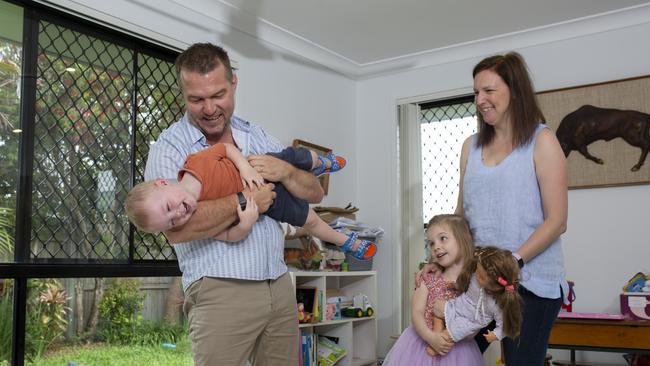
National vacancy rates are hovering around 1 per cent, the Sunshine Coast about 0.6 per cent, and the region’s mayor, Mark Jamieson, says there’s no quick fix. “I don’t think we could build homes any quicker than we’re building them now,” he says. Builders and materials are in short supply, plus the “easy” development areas have been built on and new projects must consider the environment and climate change.
Into this environment comes government money aimed at easing the crisis. At the recent state housing summit, the Queensland government added another $1bn to the existing $1bn Housing Investment Fund, committing to building 13,000 social and affordable homes by 2027.
The federal government announced a target, with the aid of private-sector investors, of one million homes nationally in five years – but builds will not start until 2024.
Demand is not going to abate for some time, says Jamieson. Another 200,000 people are expected to call the Sunshine Coast home by 2041, adding to today’s population of 350,000, as people recognise the region is “an idyllic place to live but also a place from where business can be done at a local, state, national and international level”.
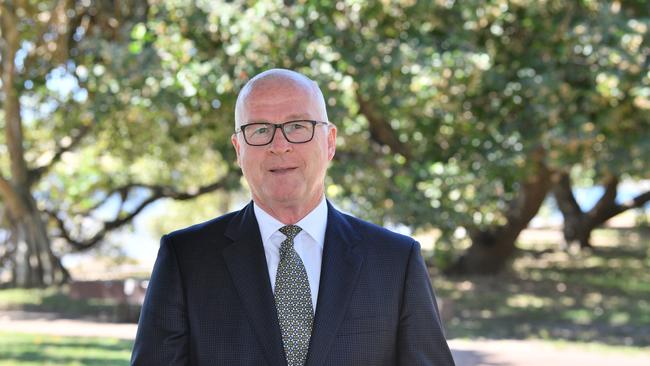
Jamieson credits much of that to the council’s decision after the global financial crisis to expand the region’s economic base by focusing on seven high-value industries, including education and research, digitally oriented knowledge industries and health. It’s why people such as Andrews and Jones have found a home for their skills in the area. And why household incomes have risen from 22 per cent below the state average a decade ago, to 4.7 per cent behind in the last census.
“That is the greatest demonstration I can put to the strength of our economic plan and the commitment of local business and those from outside who saw what was going on and wanted to be a part of it,” Jamieson says.
Many locals tell him they don’t want more growth. They’ve been saying that since he arrived on the Sunshine Coast in 1975. He says it’s newcomers who are most vocal now about “shutting the gates” but adds “we wouldn’t have the strong economy we have if we hadn’t been attractive to a growing population”.
That growth requires infrastructure, as anyone stuck on the Bruce Highway or Sunshine Motorway will attest. The Bruce just received a $586.4m budget allocation for an upgrade through Brisbane’s outer northern suburbs but Jamieson says the Sunshine Coast needs more.

A “bold commitment” to build the much-debated fast rail connection from Brisbane to Maroochydore is needed, as well as a mass transit solution to get people around the Sunshine Coast. “To ensure we don’t end up killing the golden goose with congestion on our roads.”
The lustre hasn’t faded for Andrews and Jones. After Sydney, the traffic is much less stressful. Winter was sublime and now they’re enjoying the warmer temperatures, although they’re yet to endure the humidity of February.
“It comes with the territory, right?” says Andrews. “If you want these beautiful winters and warmth for most of the year, you have to deal with a couple of months of heat.”
They’re happier than in Sydney. More relaxed. On weekends, the nature-lovers go to the beach (without doing endless loops to find a park as at Sydney’s Coogee Beach) or explore the “amazing” hinterland. They plan to wait about a year until the market settles, then buy a place with a bit of acreage for the kids to grow up on. This family is putting down roots.
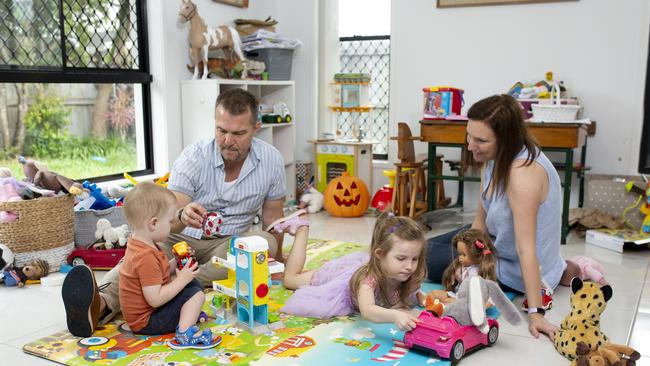
WHAT’S IT LIKE?
They started popping up as the pandemic dragged on: Facebook sites entitled Victorian families moving to Queensland, Sydney families moving to South East Queensland, or That’s it! I’m moving to the Gold Coast.
Here, curious southerners quiz those who’ve already made the move about removalists, suburbs, how to transport pets, schools, snakes, the humidity, mould, how long it takes for the kids to settle, flood areas, jobs. One member curious about how long she had to change car registration was advised: “Straight away to avoid the abuse!”.
Former Melburnian, Steve Taylor, 45, laughs, leans back on his poolside chair, and says: “That was on my mind, too. Got those plates off quick smart.” Adds his wife Rita, 44: “Changing the plates did make me feel better, driving around. Because before we arrived, we were reading about people here being against all the Victorians and NSW people coming up here and taking jobs and houses.”

To their relief, they’ve faced no backlash since moving to the Gold Coast’s Palm Beach, with Steve arriving in December last year and Rita and the kids – Lucas, 9, and Tom, 7 – in January. Words like friendly and laid-back pepper their description of their new home. They talk of people smiling at each other as they pass by, of how foreign but cool it is to see schoolkids coming home from surfing class in thongs and boardies.
It was the weather that sealed the move.
Last year, on one of their regular winter holidays to the coast, Rita strolled along Surfers Paradise beach. It was July. She was wearing a T-shirt. The water was sparkling. On return, she said to Steve, who’d been angling for a sea-change, “Maybe I can move here.”
“And he took that as ‘Right, we’re doing it’,” she says, laughing, “So we went back and started looking at houses.” It was a big decision; three years earlier they’d moved into a new home in Wantirna, 25km east of Melbourne’s CBD.
Getting to inspections was tricky because of lockdowns, so they relied on friends and videos. The boom was on and prices were going up by at least $20,000 a month. Rita got cold feet some days, sad about leaving her Italian family.
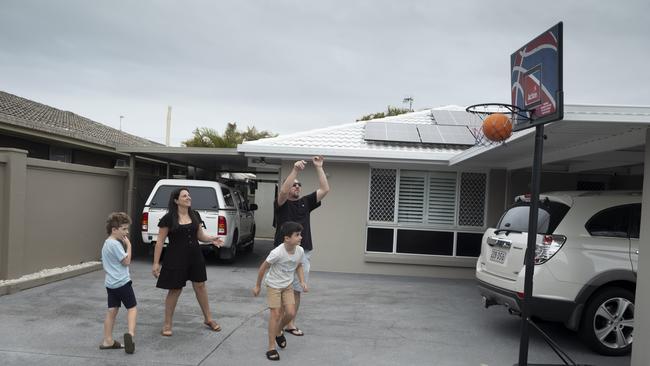
But one day, she scrolled through the listings and found this place – 850m from the beach, with a pool.
The boys are playing in it now. Steve and Rita watch them from the backyard patio, where they spend much of their time, even through winter.
“We were inside so much in Melbourne in the winter, and the boys get cabin fever,” Rita says. “Those winters were more and more depressing; it just felt like it was getting colder and wetter. Sunshine definitely makes you happier. I’m happier, that’s for sure.”
Covid and Melbourne’s lockdowns were not at the core of their decision to leave but made it possible: the pandemic push towards working from home meant Rita could relocate as a credit assessor with National Australia Bank.
Steve, a postman, put in for a transfer and had one within a few weeks. Friends checked out the house and the Taylors bought it in October for about $1.4m, selling their home for a similar price. Now the kids are settled – made friends, found an AFL club – they’re glad they took the risk. They’d agreed to give it two years but, says Steve: “It hasn’t been a year and we feel like, ‘Yeah, this is it.’ I don’t see that changing.”
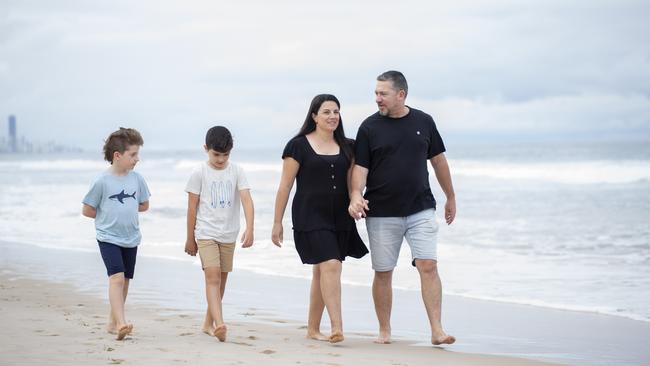
They’re coming to grips with local issues, such as the extension of light rail through Palm Beach to Coolangatta aimed at easing congestion. It surprised them to hear there was opposition to the plan: “Being from Melbourne, we thought, ‘Why wouldn’t you want trams?’,” Rita says.
But after learning the $2.7bn federal, state and council plan meant rezoning along the transport spine to allow high-rises, protectiveness of their new-found patch kicked in.
“We’ve got 10 storey ones along the beach here, that’s okay, but not more and more,” Steve says. “I like the feel of the way it is now; I don’t want them coming here. Keep them down Broadbeach way or put them along the M1.”
The reality is, says the Gold Coast’s deputy mayor, Donna Gates, the city is “going to go up rather than out”.
“That’s the most economical way of developing because we simply can’t afford the infrastructure to keep going further and further out,” she says.
Fixing traffic snarls is the city’s biggest issue and public transport is key, she says. But after community concerns, council submitted an amended plan for the rail corridor, with lower high-rises and density. It awaits the state government’s response. “I think they’ve had a bit of pressure from the development sector,” she says.
Striking a balance between growth and lifestyle is fraught.
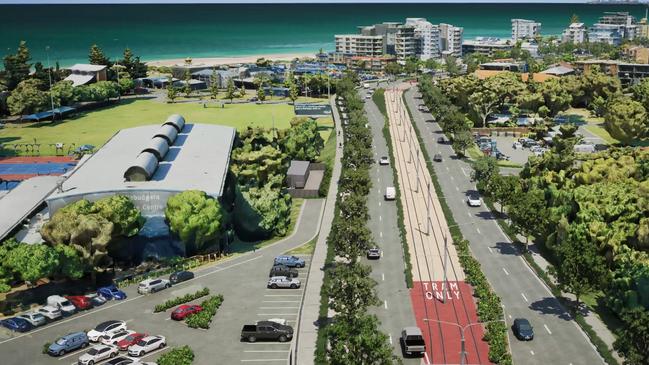
South East Queensland councils are guided on such decisions by Shaping SEQ, the blueprint for managing the region’s growth to 2041.
With the Gold Coast’s population set to jump from about 600,000 to 900,000 by then, the plan allows for 80 per cent of dwellings to be built in established areas, and 20 per cent in greenfield sites such as Coomera. (The Sunshine Coast has a 62/38 split, Ipswich 25/75, Moreton Bay 55/45 and Brisbane 94/6. Bear in mind, South East Queensland boasts about 71 per cent of the state’s population in just 1.3 per cent of its area).
“Our target is for 150,000 new dwellings by 2041,” says Gates.
“And in 19 years, that’s a lot because we normally deliver about 5000 new dwellings a year.”
She’s heard resentment from locals about the southern influx, understands the concerns, but says 30 per cent of the population comes from interstate or overseas.
And unlike in the past, when young people had to move to advance their careers, the Gold Coast’s broadening economy is helping keep them at home.
“It is a period of adjustment and change,” she says.
“And we need to get used to that change.”
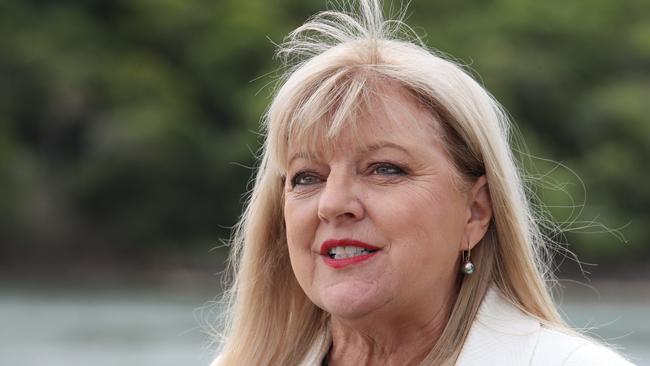
GROWTH IS GOOD
All this rapid growth, all these people moving to Queensland filled with the hope of a better life is a good problem to have, according to industry leaders.
“Absolutely,” says Cherie Josephson, the Chamber of Industry and Commerce Queensland’s policy and advocacy manager.
“We absolutely welcome all forms of migration in the current labour market.”
Businesses tell the CICQ that their main constraint is finding staff, particularly skilled workers.
Being attractive to workers in such a competitive national labour market means Queensland holds “one piece of the puzzle to filling those gaps”, especially with the 2032 Olympics and Paralympics looming.

Jen Williams, the Property Council’s Queensland executive director, says the influx is “a great opportunity” and a survey by the lobby group suggests it has a long way to run – 220,000 people from Sydney or Melbourne were “definitely” or “probably” looking to move to Queensland in the next five years.
The survey also quizzed South East Queensland residents over their concern about the influx. Half weren’t concerned; half were, either slightly, moderately or extremely.
“It’s not like people are saying, ‘Stop people coming’,” Williams concludes.
“It’s more, ‘Let’s plan for the people who are coming.’”
Infrastructure must keep up with growth, says Williams, who welcomes the $1.8bn SEQ City Deal signed earlier this year by all tiers of government.
“The community rates infrastructure as a deal breaker when it comes to population growth; if the infrastructure is delivered, people seem to be more comfortable.”
That’s not just roads and rail but sewerage, energy, water, parks, hospitals and schools.
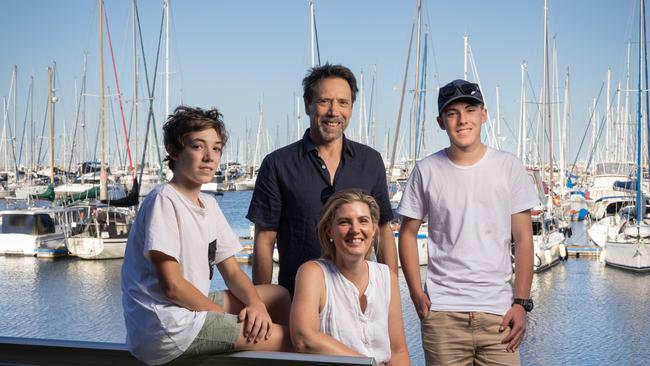
Growth is good, says the Queensland Council of Social Services CEO, Aimee McVeigh, but it should be “an opportunity to lift everyone up”.
Too many are being left behind. About 46,000 people are on the social housing register, many living in cars and tents.
“People on low incomes are experiencing the downside of our economic growth,” says McVeigh. “It doesn’t have to be like that.”
QCOSS wants 5000 new social housing dwellings every year for the next decade.
“A period of growth is a wonderful time to be optimistic and ambitious,” she says, adding federal Jobseeker payments must rise to at least $73 a day. “When the Premier talks about walking on a path of gold towards the 2032 Olympics, it should be the case that all Queenslanders have that opportunity.”
On a hill overlooking Manly harbour, Sergio Zaccaria, 59, and Sarah Tebbutt, 49, contemplate how the city they adopted will look when the Olympics arrive. They love Brisbane’s relaxed feel but know change is inevitable.
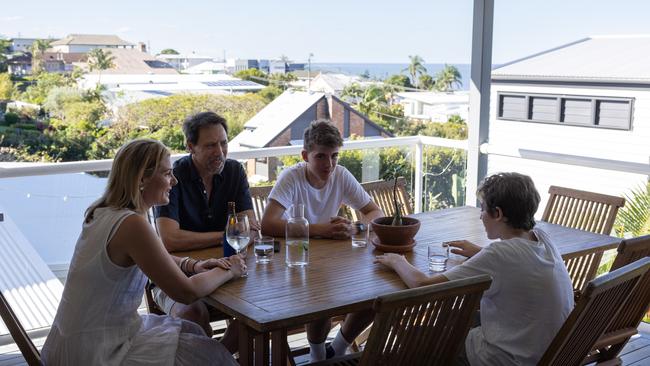
“I think the influx is good for Brisbane; it’s going to make it really exciting in the next 10 years,” says Tebbutt.
Adds Zaccaria: “But we need to start to build; this is the time for governments to open up their wallets and do what’s best for the next 50 years. The problems are coming, we’re seeing the thin edge of the wedge now. It’s not just interstate migration, there’s going to be international growth. Now is the time.”
A similar “seize the moment” sentiment brought the family to Brisbane from their former home in the Dandenong Hills, east of Melbourne.
They wanted their boys – Oliver, now 15, and Sebastian, 14 – to broaden their horizons before reaching high school.
Brisbane seemed a place of opportunity, says Tebbutt. It was also one of the best Australian cities for Zaccaria’s work in mining equipment supply.
Come early 2019, they were renting in Manly. Zaccaria liked that part of Brisbane but the school was the determining factor. Tebbutt decided Moreton Bay Boys’ College was the best fit for the boys.
Data suggests many interstate arrivals are enrolling their children in private schools, with lower fees compared with NSW and Victoria attractive to newcomers.
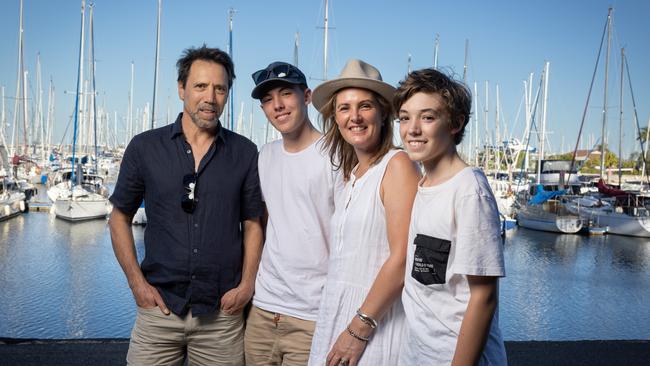
Certainly, says Tebbutt, MBBC was more reasonably priced than similar Melbourne schools. The Independent Schools Queensland CEO, Chris Mountford, says there was a 50 per cent jump in net in-migration enrolments (interstate, overseas and ex-public students) from 2019-22.
In contrast, Education Queensland says interstate enrolments were at 11,000 this year, similar to 2018. Despite anecdotal chat about state schools in high-growth areas being full, no schools are operating beyond capacity, it says, and teacher-student ratios are some of the best in the country.
The Zaccaria boys are happy with their parents’ choice, loving their school and the Queensland lifestyle.
“The feel of Queensland is nice,” says Oliver.
“People are friendlier here and I enjoy having the warmer climate. It’s sunny a lot; not cold and dark and raining. It just feels a lot happier.”
But that wasn’t their first reaction when talk turned to moving, especially from Sebastian. “I didn’t take it very well,” he says.
“I’d never had something change that big before. I just didn’t know what was going to happen. I had great friends. I didn’t want to move.”
First term was rocky but Sebastian made friends and discovered mountain bike riding. Oliver got into sailing. Both went to national championships in their chosen sport this year.

Tebbutt took a little longer to adapt, feeling isolated working from home for Bendigo Bank (she now also works for a local property group), and regular travel makes forming friendships harder for Zaccaria.
But, says Tebbutt, they’ve found good friends. They’re committed to Manly, buying a home about 18 months ago.
“The boat club is right there, the kids can ride to school, we can walk to the train station and it’s 25 minutes to town and we can jump on the freeway and get to the airport or either coast,” says Tebbutt. “It’s just easy.” And winters are wonderful.
On the downside, the humidity in the height of summer is hard to take. Anything else? They think about that a bit, searching each other’s faces for an answer before Zaccaria, grinning, lands on one Queensland oddity: Why is it that TV news reporters always seem to find “a bloke with no shirt on” as a witness?
Not every newcomer can take the heat or bare-chested blokes on the tele at 6pm. Some go back; craving family, a familiar culture, a puffer jacket. Many more stay.
And a whole lot more are right now backing out of their driveways in Nunawading or Newtown, hitting the highway to join the great exodus north.




